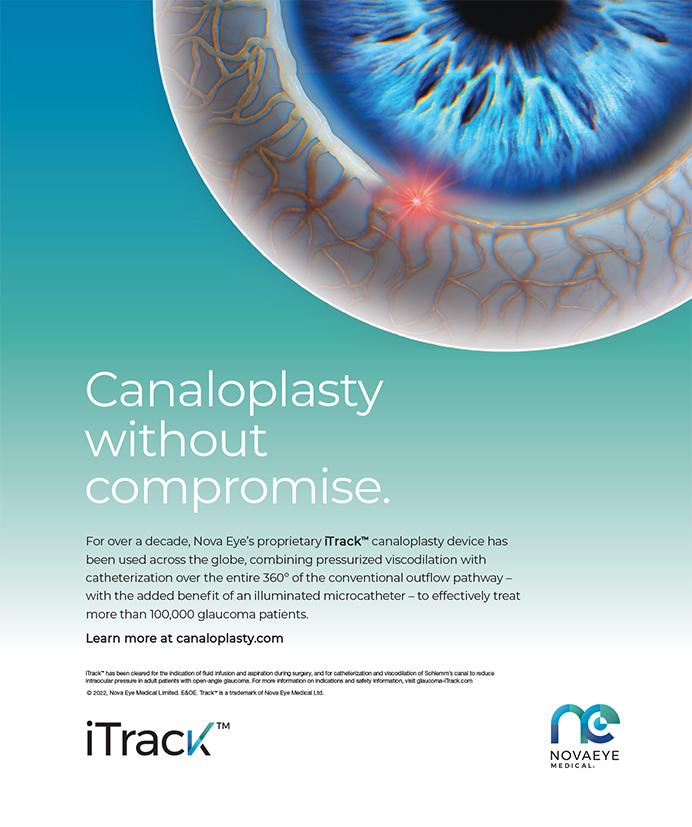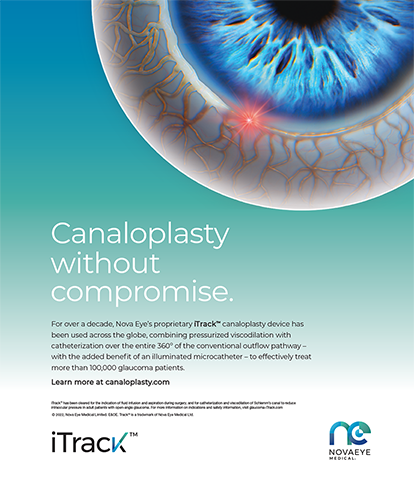What is the most positive aspect of being a cataract surgeon?
One of the greatest rewards of being a cataract surgeon is the ability to make an immediate and tangible difference in someone’s life. I still remember my first cataract patient. She was a Russian-speaking grandmother who had been suffering from poor vision for over a decade due to her mature cataracts. When I trained as a resident, the first 10 to 20 cases were performed by large-incision extracapsular cataract extraction before transitioning to small-incision phaco surgery. Her surgery was uneventful except for the length of time that it took to complete the case. Because this patient had undergone a long surgery by a novice surgeon and had many poorly placed sutures, I expected her to be very disappointed by the outcome. However, when I removed her eye patch on the morning after surgery, she started crying because she was able to see for the first time in many years. We spent the next few minutes hugging, crying, and repeating the few Russian expressions that I know: “thank you”; “hello”; “look up, down, right, and left”; and “may I have more vodka?”
What was your most challenging case?
There have been many cases with which I have struggled, but my most memorable was that of a woman in her 60s who was monocular and completely deaf. Her only means of communication was by reading lips. She could not read Braille or understand sign language. Her only eye had a dense brunescent cataract and a BCVA of 20/200, and her other eye had no light perception from a previous retinal detachment. Her sighted eye had a very short axial length, corneal guttata, pseudoexfoliation, and a poorly dilating pupil. Her referring ophthalmologist had wisely deferred surgery until it was absolutely necessary. By the time she presented to me, undergoing surgery was her only hope of continuing to communicate with the rest of the world. I was distraught at the possibility that I could cause her to lose her remaining vision and consequently lock her into a Helen Keller-like world with no visual or auditory input. As one can imagine, I had many sleepless nights leading up to the surgery. Fortunately, the phaco stars were aligned that day, and everything went smoothly.
You have been very involved in the development of tools and resources for surgical education, including the Intensive Cataract Surgical Teaching Course, collaboration on the EYESI surgical simulator, and the Virtual Mentor computer program. Have there been any recent developments in these tools, and do you have any new educational resources in the works?
The prototype of the Virtual Mentor program has been completed. A prospective multicenter trial was performed, which showed a significant improvement in knowledge acquisition with the use of this program compared with traditional cataract surgical teaching tools. My co-investigator, John Loewenstein, MD, and I have received a Department of Defense Telemedicine and Advanced Technology Research Center grant to complete at least two additional modules for the Virtual Mentor by August 2010. Optimistically, we hope to complete the entire program this summer.
What would you like to accomplish in the next 5 years?
Besides solving world hunger and eradicating all causes of blindness, I would like to send my oldest son off to college and keep my younger two from causing vehicular homicide when they obtain their drivers’ licenses. I have also developed a fairly recent obsession with triathlons. Having competed in eight so far, I hope to ward off arthritic injuries and continue to compete in them for another several years.
As the founder and president of Women Ophthalmologists of New England,what are your hopes and expectations for the next generation of female ophthalmologists?
The number of female medical students and ophthalmology residents has been steadily rising. There are now equal numbers of women and men entering ophthalmology residency programs. Women Ophthalmologists of New England recently performed a survey investigating the perceived need for more female role models. The great majority of women responded that female role models are extremely important. The respondents also agreed that there is a greater need for more female ophthalmologists in leadership positions with the various ophthalmic organizations. I hope that women continue to excel and give back to the field by teaching, leading, and mentoring young colleagues.
Dr. Henderson holds a financial interest in the Virtual Mentor program and may receive a portion of the royalties from its future sales and distribution.


